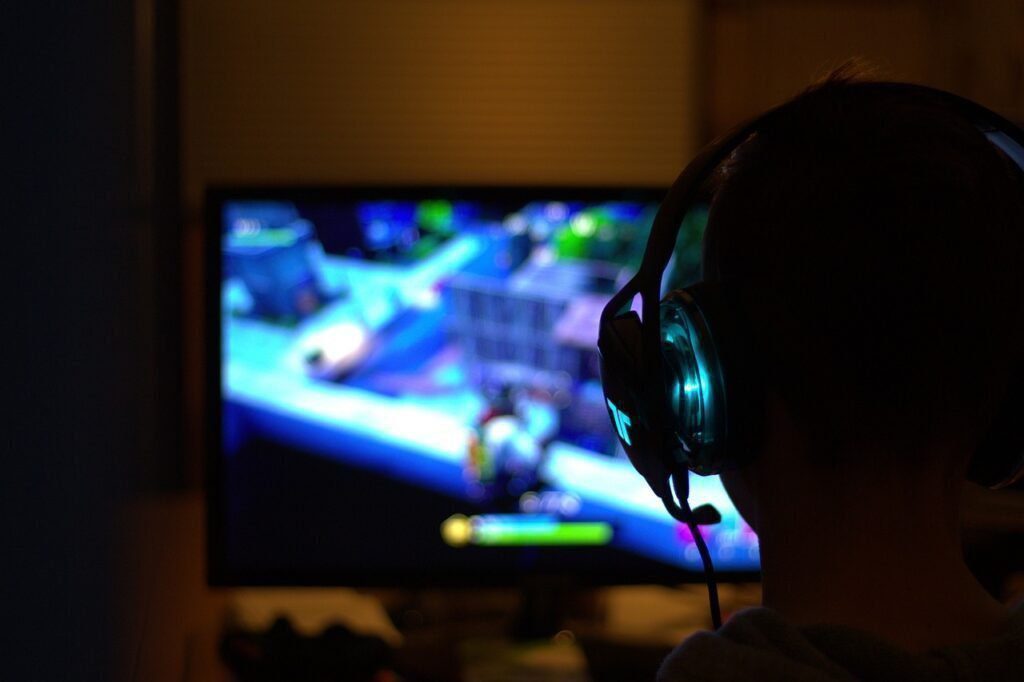The year is 2025, and gamers are now unlocking achievements—not with a keyboard or controller—but with their brains.
Welcome to the world of neurogaming, where brain-computer interfaces (BCIs) are transforming how players interact with games. Once considered science fiction, brain-controlled gaming is now real, commercial, and rapidly approaching mainstream status. It’s redefining not just input methods but the entire relationship between player and machine.
This deep-dive unpacks what neurogaming is, the tech powering it, how it’s being used today, real products available to consumers, ethical debates, and what the future holds when your thoughts become your joystick.
What Is Neurogaming?
Neurogaming refers to video games that interact with the player’s brain activity in real time using BCI devices. These games either:
- Let players control in-game actions with their thoughts, or
- Dynamically respond to emotions, stress levels, attention span, or cognitive load detected via EEG (electroencephalogram) or other neural signals.
In simpler terms:
🎮 Your brain becomes the controller
🧠 Your mental state becomes the game mechanic
How Does It Work?
- Neural Signals Detected
Electrodes in a wearable headset (like an EEG band) detect brainwave patterns (Alpha, Beta, Theta, Gamma). - Signal Processing via AI
The raw data is filtered, cleaned, and interpreted by an AI model that decodes intent, focus, or emotion. - Game Response
The game uses this input to move characters, trigger events, adjust difficulty, or track performance.
Example:
- If you’re losing focus, the game might slow down.
- If you’re calm and focused, you might levitate objects or solve puzzles faster.
Real Consumer-Ready Devices in 2025
🧠 Neurable
- Sleek EEG headsets that detect intent + concentration
- Partnered with Unity for dev SDKs
- Games like Focus Odyssey and NeuroRacer+ now support Neurable input
🧠 NextMind (Snap Acquisition)
- Visual cortex interface, converts visual focus into input
- Popular with AR and VR games
- Now integrated into Snap Lens Studio
🧠 Muse S Headband (Gen 3)
- Started as a meditation tracker
- Now includes game integrations with CalmCraft and MindMaze Runner
- Measures stress, calm, focus
🧠 Kernel Flow (High-end, pro-tier)
- Medical-grade neuroimaging
- Used for advanced testing in game studios and eSports
Popular Neurogames in 2025
- “Ascend”
Control a levitating monk purely with calmness and breath control. Too anxious? You fall.
🎮 Platform: PC + VR
🧠 Device: Neurable or Muse S - “Mind Maze Arena”
Multiplayer brain-vs-brain combat game. Focus hard enough to throw energy shields or trap enemies in illusions.
🎮 Platform: Meta Quest 3
🧠 Device: NextMind - “Synaptic Sprint”
Endless runner where your concentration controls speed. Distracted? Slows down. Zen-like? Speed boosts.
🎮 Platform: Mobile (iOS/Android)
🧠 Device: Muse S Lite - “Echoes of Emotion”
An RPG that rewrites its story path based on your emotional response to character deaths or plot twists.
🎮 Platform: PC/Console
🧠 Device: Kernel Flow (beta)
Why Neurogaming Is Gaining Momentum
✅ Hands-Free Gaming
Perfect for differently-abled players or accessibility-first designs.
✅ Mental Fitness + Entertainment
Gamified focus training, ADHD management, and anxiety tracking in one.
✅ Immersive Storytelling
Emotions shape plot, music, NPC behavior—games adapt to your inner state.
✅ New eSports Frontier
BCI-based reaction time competitions are launching in niche leagues.
✅ AI Synergy
Neuro-data + GPT-style engines = responsive, sentient-feeling game worlds
Industry Adoption in 2025
- Unity & Unreal Engine: Both now offer native BCI SDK support
- Sony & Microsoft: Quiet R&D into neural input for next-gen controllers
- Apple Vision Pro: Rumored to feature neurofeedback support in future releases
- Meta Quest Pro: Supports NextMind SDK for VR neuro-input
Studios like Ubisoft, Thatgamecompany, and Superliminal are experimenting with empathy-driven level design, using neural APIs.
Neurogaming in Education & Therapy
Neurogames aren’t just fun—they’re functional.
🎓 In Classrooms
- ADHD learners use games that reward focus
- Emotional intelligence modules adapt based on student stress
- Biofeedback training improves attention span in under 30 minutes/day
🧘 In Mental Health
- Meditation apps become interactive games
- CBT modules are gamified with real-time feedback on calm/fear
- Trauma recovery games track emotional triggers
Apps like Headspace Play, InnerQuest, and CalmForge combine wellness with gaming through neural input.
Challenges and Controversies
⚠️ Privacy
Brain data is deeply personal. Who owns it? How is it stored? Can it be hacked?
⚠️ False Positives
Neural signals are noisy. Misinterpretation can lead to poor user experiences.
⚠️ Fatigue
Neurogaming sessions require mental focus—overuse can be exhausting.
⚠️ Cost Barriers
Pro-level neuro headsets are still $300–$3,000, limiting access.
⚠️ Ethics in PvP
Should mind-controlled input be allowed in competitive multiplayer?
The Road Ahead
🔮 Neuro-AI NPCs
Your mood may influence how AI characters behave, trust, or fear you.
🔮 Emotion-Sensitive Difficulty Scaling
Games adapt not just to skill—but to frustration, flow, and motivation.
🔮 Dream Integration
Experimental neurogames use sleep data and lucid dreaming APIs to create dream-state gameplay (early tests with DreamTrack and Lucidia).
🔮 BCI-Only Game Jams
2025’s Global Game Jam had a “Neuro-only” category—won by a 17-year-old who built a stealth game navigated by heart rate + alpha wave sync.
Final Takeaway
Neurogaming isn’t just a novelty—it’s a new human-computer language.
By blending brainwave data, real-time AI, and responsive game design, neurogaming offers a radically immersive and personal playstyle. In 2025, it’s no longer just for hackers or labs—it’s for players who want to feel truly connected, not just to the game, but to themselves.
The controller is dead.
Long live the mind.

